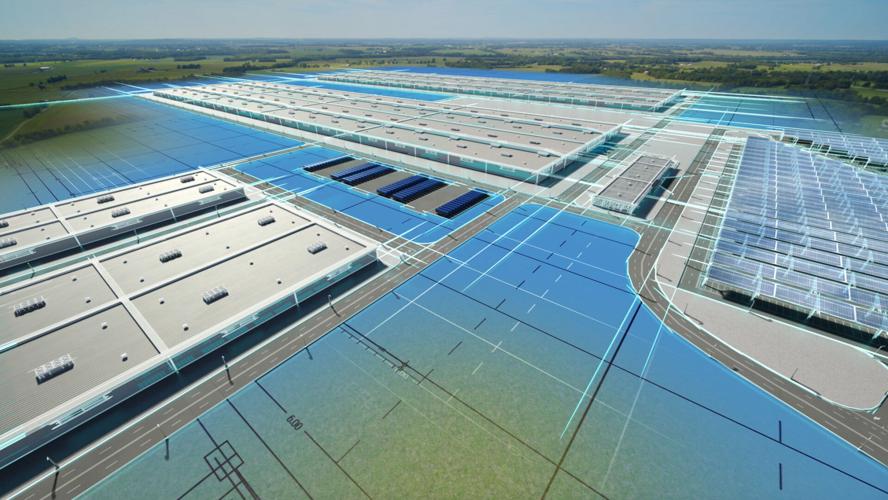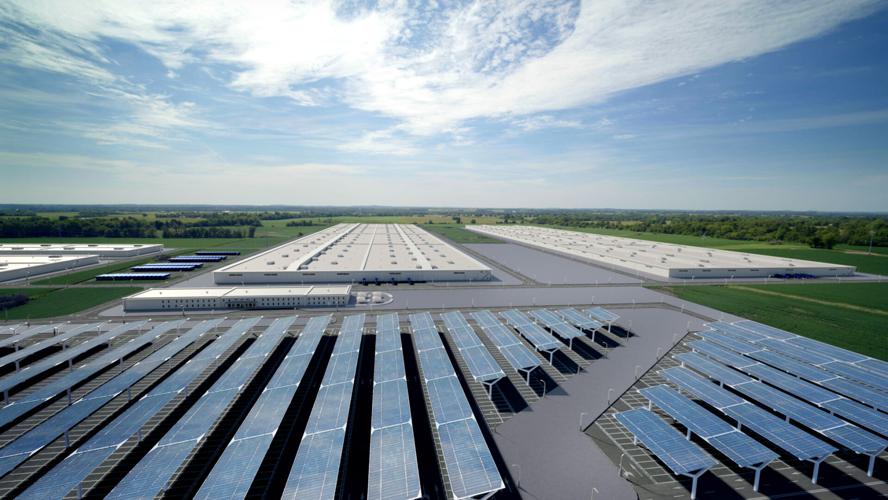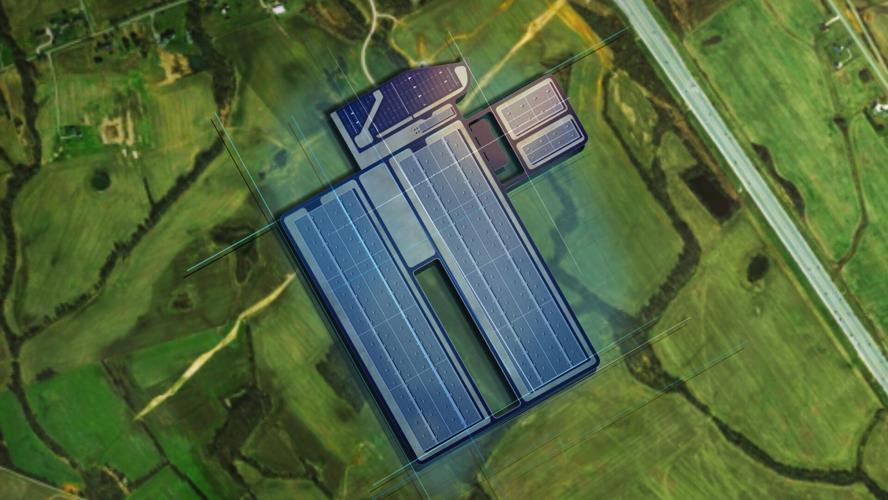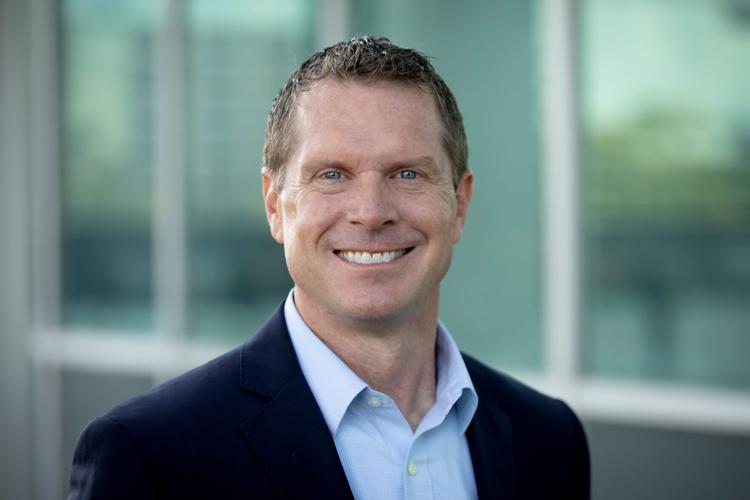LOUISVILLE, Ky. (WDRB) -- Ford plans to build a $5.8 billion, 1,500-acre campus near Interstate 65 in Hardin County that will focus on manufacturing batteries for the next generation of electric vehicles.
The plant will be called BlueOvalSK Battery Park and is expected to initially bring about 5,000 new jobs to the area.
On Wednesday, WDRB News reporters discussed plans for the facility with Greg Christensen, Ford's electric vehicle footprint director:
Q: What is the latest update on the timeline for construction?
Christensen: "We've got the first event associated with that. We're going to be in Elizabethtown (on Thursday), hosting an event with up to 1,000 potential subcontractors. There are lead construction companies, Barton Malow and Grey construction will be hosted along with some representatives to support an event to really disseminate information about participating in the project. So this is really setting up our process to identify those that participate. We're really focused on, you know, local and diverse suppliers as well and looking to get that started in earnest (Thursday). Securing those subcontractors and sharing information that, as far as the actual moving ground, that will happen certainly this year. We're in the process of finalizing permits. So we've been partnering with government agencies and governments that are in the state of Kentucky to finalize those permits and are going through and then as soon as those who are approved will be open to start moving land and building foundations. So still the same, this year, we don't have a groundbreaking date. But we'll be sharing that shortly and excited about having a groundbreaking event here in the near future."
Q: How do you view Louisville’s current Ford plants being involved with or coexisting with this battery facility?
Christensen: "I think in some ways, they're complementary. But they're also, they're also quite separate, right? I mean, this new site down in Elizabethtown is dedicated to a joint venture that we're in the midst of completing with SK. And so the operations of that plant will be part of a joint venture called BlueOval SK. And so in that regard, they are separate, you know, right? But, obviously, we've got a great history in Kentucky, you know, we've got 13,000-plus employees associated with our assembly plants, and they produce tremendously important products for Ford Motor Company. So we have that wonderful history. But I would, I would keep these distinct in that one is going to be part of the JV and these others are true for Ford assembly plants."
Q: How do you envision the supply network for the components that will go into the batteries? Will any companies that provide the components locate in the region?

Greg Christensen, Ford's electric vehicle footprint director.
Christensen: "So this was our first step in terms of securing the needed supply of batteries and, you know, the next move from a battery cell perspective, over 1 million units worth of worth of overall capacity. But as you can imagine, you know, we're looking at all the elements of supply and we'll be with our partner SK on securing needed supply. We often talk about and we've got a partnership with and a working relationship with materials who is a recycler and battery materials company. What often gets shared is that most of these materials you think about nickel and lithium and cobalt, for example, are found all over the world. And so we, like others, are really looking at what ways can we bring some of the processing of materials and the things that go into batteries closer to home, so you know, more to do in this space. But it's something that we're really thoughtful about and are thinking about how do we how do we take the tier two and tier three and tier fours of this process and make sure that we've got ample supply of the materials needed to make batteries."
Q: How important are state incentives?
Christensen: "Incentives are important, you know, a combination of approaches on taxes as well as forgivable loans or tax. Capital grants are critical, but I don't see the approval or any formalization of that as a hindrance to our construction process. But they certainly are important amongst other things in partnership with government on training and development of people. The work that we try to move fast on the permits, all those are critical, but all of that is going quite well with our expectations."
Q: How important is recently announced training program for recruiting and hiring workers in the future?
Christensen: "Yeah, so it is. It's critical, and we are already setting team members to meet with local leaders at the county level then, obviously, with the state and much of what we will do will be with the county leaders and developing the workforce closest to the site and then you know, working out from there. But the nature of the operation of battery plants is unique. There's unique skills and unique talents needed. And we're excited about developing, but one of the things that you have with a 2025 target launch date, it takes a long time to build so you can actually build the talent. Some of the talent that will work in this this facility, they're in high school, they’re in trade schools, and so we don't take that lightly. We understand that. It's a big part of part of building community as well, right? So super excited about the participation of the state in this process and also very excited about the local participation as well."
Q: What changes are expected to be made at the site over the next year?
Christensen: "Yeah, in general terms, once we get through the permitting process, you'll see a land later in that preparation process that will kick off and we expect that to happen soon. And so we love the sites there. The typography is very friendly to what we want to do, so we don't have to do an excessive amount of that work. But there's still some so that you'll see once you see the land leveling and land preparation. Just start seeing infrastructure, initial roads and work with the local utilities. Then from there, you'll see foundations, the building of foundations for these significant structures, and then later this year or next year, you also start seeing the buildings themselves being produced. So high level, we're going to be, you know, land preparation, foundations and then buildings and hoping to start that soon."
Related Stories:
- Beshear says new Ford battery plants will bring 5,000 'good-wage jobs' to Hardin County
- Ford announces plans to build $5.8 billion plant in Hardin County, creating 5,000 new jobs
- Glendale businesses, visitors share excitement and concerns about Ford plant plans
- Glendale battery plants could pursue Kentucky loan worth $250 million
Copyright 2022 WDRB Media. All Rights Reserved.


















